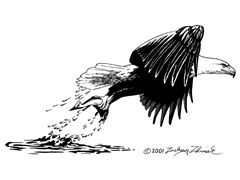Extension Wildlife & Fisheries Specialists Conferences
Date of this Version
October 2006
Abstract
In the 1970s, coyote attacks on humans in urban and suburban environments began to occur, primarily in Southern California. Such attacks have increased in number, and since the late 1980s coyote attacks on people have been reported from at least 16 additional states and 4 Canadian provinces. Attack incidents are typically preceded by a sequence of increasingly bold coyote behaviors, including attacks on pets during daylight hours. In suburban areas, coyotes can habituate to humans as a result of plentiful food resources, including increased numbers of rabbits and rodents, household refuse, pet food, water from ponds and landscape irrigation run-off, and intentional feeding. Cessation of predator control has also contributed to coyotes’ loss of wariness toward humans. Preventive (e.g., habitat modification) and corrective actions (e.g., hazing) can be effective if implemented before coyote attacks on pets become common. However, if environmental modification and changes in human behavior toward coyotes are delayed, then removal of offending coyotes is needed to resolve threats to human safety. Coyote attacks on humans in suburbia are largely preventable, but the long-term solution of this conflict requires public education, changes in residents’ behavior, and in some situations, the means to effectively remove individual offending animals.


Comments
Published in Proceedings, 11th Triennial National Wildlife & Fisheries Extension Specialists Conference, October 14-18, 2006, Big Sky, MT.